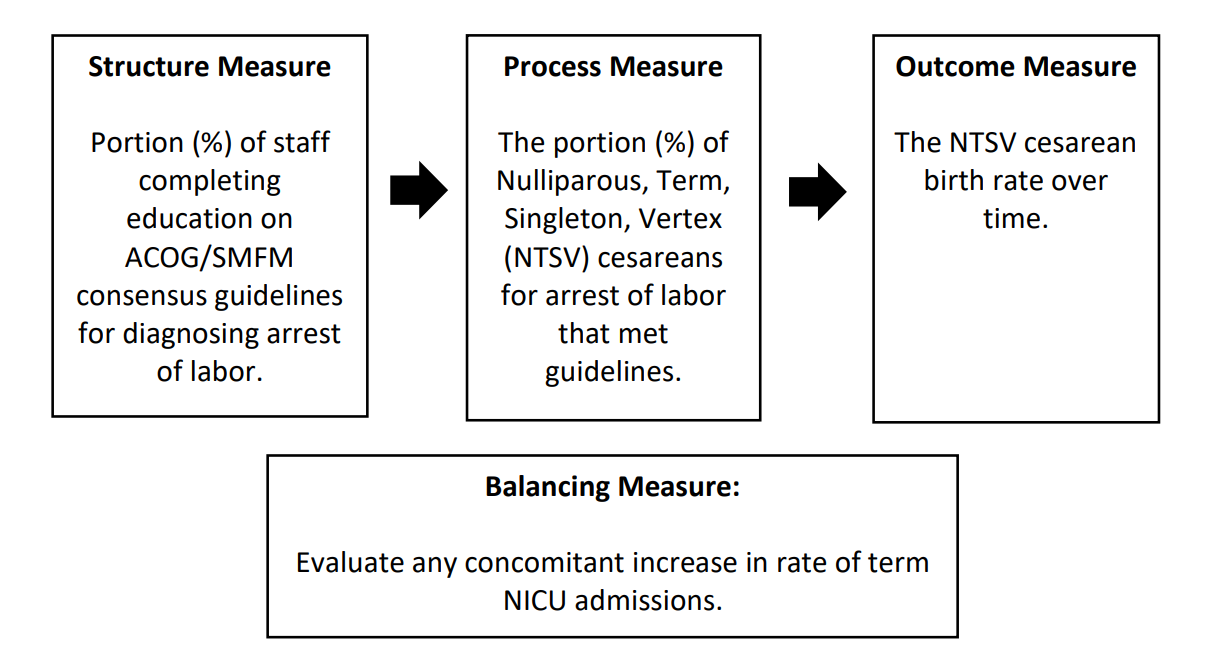Published: 12/2023
Types of measures used in quality improvement:
- Structure Measures Process Measures
- Outcome Measures
- Balancing Measures
Measures, or metrics, are an essential tool to evaluate current system performance, identify improvement opportunities, and evaluate the progress and success of a quality improvement (QI) project. Donabedian first proposed his model of Structure, Process, and Outcome (SPO) measures in 1988 and further elaborated on this in 2005.1,2 The Donabedian model, sometimes alternatively referred to as the SPO model, continues to be widely used both within and external to healthcare to drive performance improvement. As stated by Donabedian, “good structure increases the likelihood of good process, and good process increases the likelihood of a good outcome.”
In this framework, structure measures assess the necessary resources to achieve the desired outcome. These include both physical resources (facilities, equipment, electronic health record tools) and personnel resources (appropriate number of adequately trained staff).
Process measures track performance in the key, individual steps in the process toward the outcome. A key component of any project is to map the process(es). Process measures can be chosen by a review of this map and QI activities should focus on optimizing these processes. A process measure may be the portion of the time a specific step in the process is completed in the desired way. A single project will often have multiple process measures reflecting multiple key steps in the process.
Outcome measures are the overall results your project seeks to improve, for example reducing surgical site infections, reducing Cesarean birth rates, or raising patient satisfaction scores. Most projects include a single outcome measure.
Balancing measures are important as they ensure the QI team is considering systems and outcomes at risk of unintentionally worsening due to QI project efforts. Often these will be clinical outcomes that are also impacted by the process being focused on.
Example: Measures used in a project intended to safely reduce primary cesarean birth by ensuring that arrest disorders are diagnosed appropriately.

References
- Donabedian A. The quality of care. How can it be assessed? JAMA. 1988 Sep 23-30;260(12):1743-8. doi:
10.1001/jama.260.12.1743. PMID: 3045356.
- Donabedian A. Evaluating the quality of medical care. 1966. Milbank Q. 2005;83(4):691-729.
doi:10.1111/j.1468-0009.2005.00397.x
